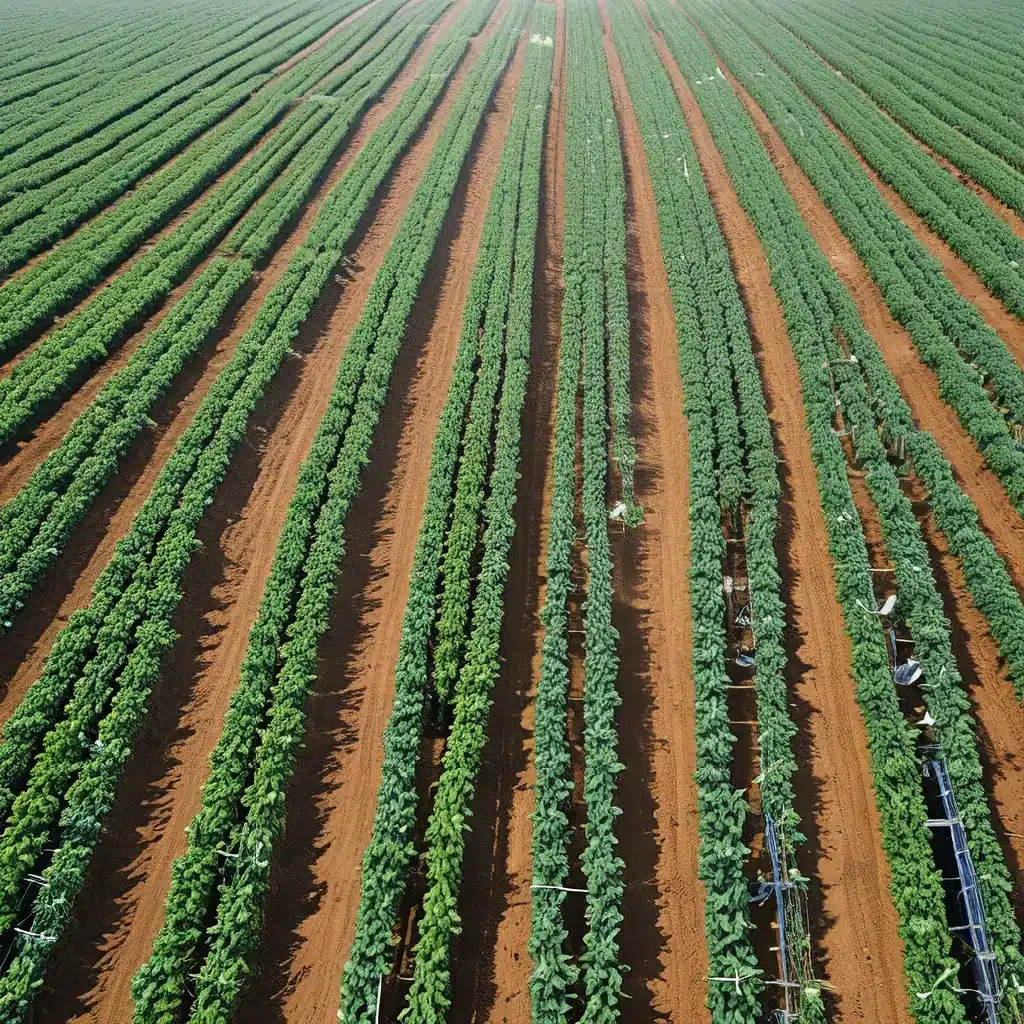
As a farmer and animal lover, I’ve always been passionate about sustainable practices that can benefit both my community and the environment. Recently, I was introduced to a revolutionary agricultural concept called agrivoltaics, and it has completely changed the way I think about the future of farming.
Agrivoltaics is the integration of solar power generation and traditional agriculture on the same piece of land. It’s a win-win situation that allows us to harness the power of the sun for clean energy, while also maintaining productive farmland. I’ll admit, when I first heard about it, I was a bit skeptical. After all, how could we possibly squeeze solar panels onto our fields without compromising our crops? But after attending a two-day event to learn more from the experts, I was thoroughly convinced that this could be a game-changer for my farm and others like it.
Reaping the Benefits of Dual-Use Farmland
The first type of agrivoltaics involves crop production underneath and in between the solar panels. Now, you might be thinking, “Wait, how can plants grow properly with all those panels blocking the sunlight?” It’s a fair question, but the research shows that the crops actually thrive in these agrivoltaic systems. They use much less water than traditional farming methods, and the yields can be higher too. It’s almost as if the crops are getting a “double harvest” – one from the sunlight they receive, and one from the renewable energy the panels generate.
But the benefits of agrivoltaics don’t stop there. The second type involves cultivating pollinator-friendly habitats around the solar panels. We all know how crucial pollinators like bees, butterflies, and ants are to our food production, and many of these species are in danger right now. By planting native vegetation under and near the panels, we can create vital pollinator habitats that support these essential creatures.
The third type of agrivoltaics that I’ll be participating in is sheep grazing. Studies have shown that allowing sheep to graze around the solar panels has mutual benefits for the farmland, the animals, and the farmer. The land stays in use, the sheep have protection from the weather, and I get a little extra income. It’s a true win-win-win situation.
Debunking the Myths about Solar and Agriculture
I’ll admit, when I first heard about the Mammoth Solar project in my community, I had some reservations. I’d heard concerns that it might hurt our crop production or food future. But after learning more about agrivoltaics, I can confidently say that’s simply not the case.
In fact, I’m impressed by the leadership at Doral Renewables, the developers of Mammoth Solar. They’ve been open-minded and proactive in working with our community to implement thoughtful agrivoltaic systems. They’ve engaged in honest conversations with us and collaborated with landowners like myself to ensure we can continue to farm our land while also generating clean energy.
Powering a Sustainable Future for Food and Energy
The truth is, there’s no choice between our farmland and clean energy – we can absolutely do both. In fact, as the research from the Global Alliance for the Future of Food and Dalberg Advisors has shown, our food production, transport, and storage are responsible for a staggering 15% of all fossil fuel emissions every year.
To achieve our net-zero goals and limit global warming to 1.5°C, we must transition our food systems away from fossil fuels and towards renewable energy solutions like agrivoltaics. And this isn’t just about climate change – it’s also about food security, income inequality, and sustainable development.
Decentralized renewable energy solutions have the potential to revolutionize agriculture in developing regions like Sub-Saharan Africa and Asia. By powering essential tasks like refrigeration and irrigation, we can unlock a new era of productivity, efficiency, and prosperity for farmers and communities.
A Sustainable Future is Within Reach
As I look to the future of my farm and our broader agricultural landscape, I’m filled with a sense of optimism and possibility. Agrivoltaics has shown me that we can harmonize our energy and food systems in a way that benefits everyone – from the farmers to the consumers, and from the environment to the economy.
Of course, there’s still a lot of work to be done, and ongoing research will be crucial to refining and improving these practices. But I’m confident that with continued collaboration between the food and energy sectors, policymakers, and the public, we can power the future of food production in a way that is sustainable, equitable, and prosperous for all.
So, if you’re a fellow farmer, an energy enthusiast, or just someone who cares about the future of our food and planet, I encourage you to explore the possibilities of agrivoltaics. It might just be the key to unlocking a new era of abundance and sustainability for our communities.

